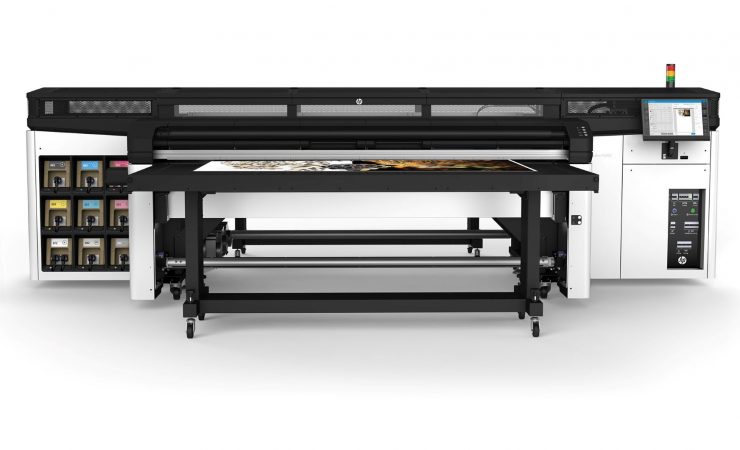In this exclusive blog Oscar Vidal, HP’s large format global business strategy director, explains how connectivity, versatility and sustainability are continuing to drive the future of the large format sector.
Despite a challenging and unusual year, Print Service Providers (PSPs) have proved themselves to be resilient in dealing with the shift in customer needs. In the US, for instance, there was a 60% increase in demand for Covid-19 related signage in the early stages of the pandemic, in particular floor graphics and signs[i]. PSPs had to respond fast, offering shorter runs while still ensuring productivity and profitability. Those further along their digital transformation journey were best positioned, able to leverage innovative technology to meet fast turnarounds, as well as incorporate new formats and ensure sustainable printing.

HP’S Oscar Vidal
As we slowly but surely emerge from the pandemic, now is a good time to assess the long-term impact of these shifts, and look more broadly at how connectivity, versatility, sustainability in particular will shape the ‘next normal’.
Connectivity
With reduced workforces and social distancing measures in place, remote tools and software became indispensable for monitoring device performance and output without physically being on site or in front of the printer. For some PSPs, this was the first time the power of digital printing hit home as a means of evolving their business. In particular, they looked at software solutions as tools to help enable more powerful, adaptable, and profitable work.
Solutions such as HP PrintOS have proven indispensable, helping users stay on top of production and helping to make data-driven decisions. But remote access software is not enough as a standalone tool – intelligent automation is also key. In this regard, the HP Applications Center helps customers to easily integrate an online decoration and signage design experience tool into a website, or the HP Configuration Center to easily customise substrate profiles across an entire fleet. Additionally, third party solutions can be incredibly valuable in providing a complete and reliable end-to-end workflow that works seamlessly with print hardware.
Versatility
Being versatile has always been valued, but it became paramount for PSPs during the past year. Customer demands changed overnight, and the need for PPE, face masks, and associated signage rose by an unprecedented amount. PSPs had to adapt to the changing demand and experiment with new formats or miss out on jobs.
For example, Paul Bristow, a UK-based print firm, took an HP Stitch S300 and used it to produce face masks adorned with customers’ favorite artworks. Elsewhere, as the pandemic continued to develop, Kirkwood Printing of Wilmington, Massachusetts, was one of many PSPs which mobilized for overnight delivery of outdoor signage – printing materials as fast as possible with its HP Latex R2000 printers for use in drive-through COVID testing centers.
The PSPs who chose to experiment with new technology, diversify their offerings and adapt at speed are the ones who have remained resilient over this period. Leveraging versatile technology will help print businesses remain agile, embrace new opportunities and, ultimately, win more business.
Sustainability
Last but not least, another important factor that PSPs need to address if they’re to remain competitiveness is sustainability. With almost 60% of end consumers wanting to alter their purchasing habits[ii] in a bid to reduce their carbon footprint, the knock-on effects will be felt throughout the business world – with firms looking for partners who will help them ensure they are delivering sustainable products and services. Meanwhile, environmental safety regulations are only going to get tougher.
Being clear and open on the sustainability credentials of your print-offerings will quickly move from a ‘nice to have’ extra to a mandatory part of any deal. OEMs can help PSPs develop a more sustainable offering to remain competitive in tomorrow’s market, For instance, HP’s latest-generation print technologies, including the HP Latex series, use water-based inks, which produce odorless prints and are capable of printing on eco-friendly media. All four devices in the new HP Latex 700 and 800 series use the HP Eco Carton, a cartridge made with cardboard material that reduces carbon emissions by 60%[iii] and plastic usage by 80% over previous Latex cartridges.[iv]
It’s certainly been a challenging year for all in the large format print sector. PSPs have had to re-tool and reimagine their business models at speed to keep up with an unpredictable market. But by understanding how these changes have played out, and what this means for the future, large format players can be better prepared to thrive in the years to come.





